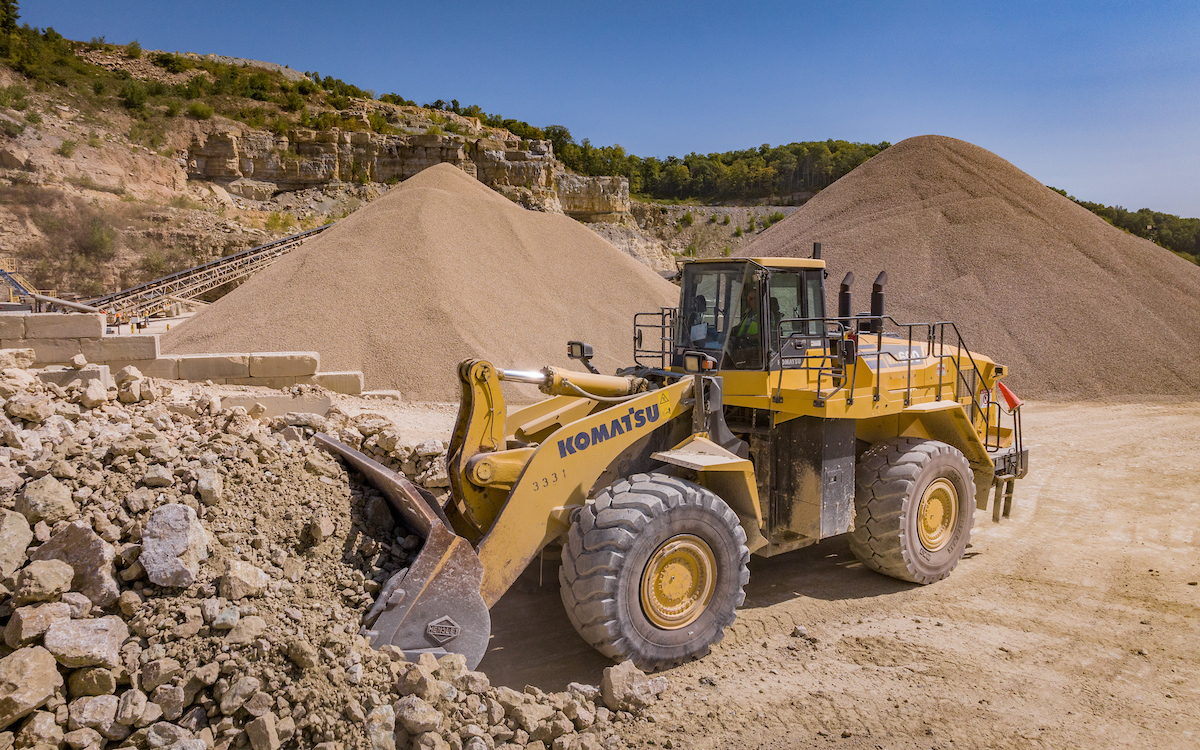People say that Dolomitic Limestone is better, but what exactly is Dolomitic Limestone and how/why is it better than regular Limestone?


Like many of you, I’ve been curious as to what exactly the difference between the two is, so I did some research and here is what I found. Simply put, Dolomitic Limestone is just a variant of Limestone (a sedimentary rock), consisting of mainly magnesium calcium carbonate instead of calcite and aragonite. Dolomitic Limestone is also known as “Dolomite,” and is often preferred over Limestone because it has a harder composition, is less absorbent and more resistant to freeze-thaw cycles, and has a higher resilience to acidic erosion.
Now you may be wondering, what are the benefits to having a harder composition? Well, the upside to using Dolomite is its strength. It achieves a range of 3.5-4 on the Mohs Hardness Scale, while Limestone only rings in at a 3. This means a tougher, longer lasting result.
In addition to this, Dolomite has a lower solubility, making it resistant to dilute acid media, meaning it does not break down or erode nearly as fast as Limestone when subjected to the acid contents of rain and soil. Consequently, Dolomite requires higher temperatures before it starts decomposition, which makes it better for environments with varying temperatures; many outdoor walkways and structures use the stone as an outer or top layer.
In fact, studies have shown that Dolomite provides excellent binding materials for mortar and concrete as you can obtain dolomite lime and magnesium binder from it. There are numerous benefits to using these binding materials in concrete, one specifically being that it provides a great contact zone with organic natural fiber aggregate. Not only is it a great binder, but the fine and ultra-fine particles that are derived from it can act as a great micro-filler, which is an important component of concrete mixtures. Filling micro voids is crucial, as this process creates a more dense microstructure, meaning an increase in impermeability to the elements. In addition to improving the impermeability of the structure, Dolomite has been tested in lightweight aggregate concrete in comparison to natural sand. In these tests, it was found that Dolomite provides the same mechanical properties and water impermeability in addition to compressive strength as the natural sad did; the incorporation of Dolomite by-products also improved the stability and workability of the mixes.
So when it comes to durability and longevity, Dolomite is definitely the winner.
We already talked about Dolomite's lower solubility levels and heightened impermeability, but what exactly does that mean when it comes to things like paving and cement? Well, thanks to Dolomite's stronger, less absorbent nature, it holds up better to things like fluctuations in temperature, changing weather and seasons, and moisture. Water and acids take much longer to seep into the stone compared to its counterpart, Limestone. Since water takes longer and is less likely to seep into cracks, this means more resistance to the usual breakdown caused by freezing and thawing cycles, resulting in a longer lasting, durable structure.
But absorbency doesn't only matter in maintaining a structure or producing a solid cement mixture, it also makes a huge difference in the production of asphalt. This is where choosing Dolomite instead of Limestone as your aggregate shows one of its biggest advantages. To put it simply, less absorption means asphalt makers don't need to add nearly as much oil to their asphalt mix, saving time, money, and of course oil.
We have mostly been focusing on Dolomite's usage in aggregates and construction, but it also plays a huge role in agriculture. Let's talk a little bit about that.
One of the benefits to using Dolomite over regular Limestone is its effectiveness in the agricultural industry. Due to the high concentration of magnesium in the stone, it is able to provide a highly effective, long lasting boost to nutrients in soil and balance the pH levels. In addition to being able to neutralize the pH, the lime that is introduced helps encourage the growth of microorganisms, which contribute to plant health.
The crystalline, porous structure of Dolomite also provides aeration to the soil, stimulating nitrogen production and absorption. This enrichment helps with both magnesium and potassium deficient plants, allowing them to flourish. Additionally this boost can last between 2-4 months, whereas regular Limestone would only last between 1-2 months.
While this article focuses mainly on the aggregate usage of the rock, many other vocations make use of the material. Some of Dolomite's other uses include; acid neutralization, stream restoration, magnesia feed additives for livestock, use in pharmaceuticals, sintering agent and flux in metal processing, an ingredient in glass, brick, and ceramic making, and much more. This material is highly useful, resilient, magnesium-rich, and most importantly, often times less expensive than regular Limestone.
To sum up, the benefits to choosing Dolomite over regular limestone comes down to its longevity, durability, hardness, lower water and acid solubility, lower absorption, resistance to freeze-thaw cycles, impermeability to the elements, porous structure, strength, useful by-products, richness of magnesium, and it's a money saver.
So, if what you're looking for fits in with these benefits, Dolomitic Limestone is your solution!
Pattison produces high quality ordovician dolomitic limestone aggregates and silica proppants. Our Clayton IA, quarry contains multiple limestone ledges yielding material with a variety of properties that meet various requirements. Our products are certified for use by multiple state Departments of Transportation, and the FAA.